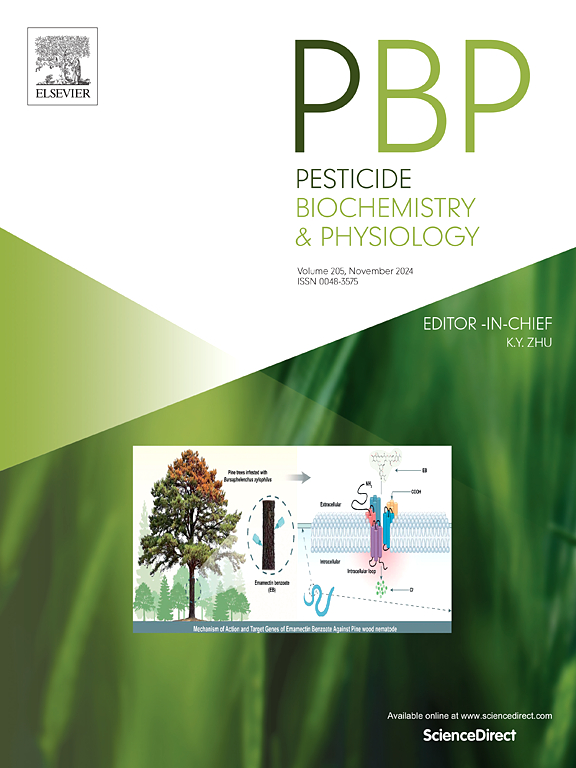RNA interference-mediated silencing of GNBP2 reduces the immunity of stored pest Tribolium castaneum against bacteria
IF 4.2
1区 农林科学
Q2 BIOCHEMISTRY & MOLECULAR BIOLOGY
引用次数: 0
Abstract
Gram-negative bacteria binding proteins (GNBPs) are involved in regulating the immune response of insects. The information on functions and mechanisms of insect GNBPs in innate immunity will contribute to biological control of pests. Tribolium castaneum is a serious, world-wide pest damaging stored food and feed products. However, the study on roles of GNBPs in T. castaneum innate immunity is relatively scarce. In this research, we identified TcGNBP2, a GNBP2 found in the cDNA library of T. castaneum. Spatiotemporal examination indicated that TcGNBP2 exhibited significant transcription in early pupae stages, and mainly distributed in two immune-related tissues, hemolymph and fatbody. After Escherichia coli or Staphylococcus aureus challenge, TcGNBP2 transcription levels increased significantly from 6 to 72 h. The binding ability of TcGNBP2 to lipopolysaccharide, peptidoglycan, and β-1,3-glucan was predicted by molecular docking analysis and confirmed by ELISA. The subsequent investigation revealed that TcGNBP2 exhibited binding affinity towards five distinct bacterial strains and demonstrated agglutination activity against four of them. Silencing of TcGNBP2 with RNA interference (RNAi) results in the inhibition of antimicrobial peptide gene expression and the prophenoloxidase cascade in beetles upon bacterial challenge, thereby attenuating the immune response of T. castaneum. The survival tests revealed that the knockdown of TcGNBP2 significantly compromised T. castaneum's resistance to bacterial infection. Our findings provide valuable insights into the regulatory mechanism of TcGNBP2 in the innate immunity of T. castaneum and offer a promising molecular target for RNAi-based management of insect pest.

求助全文
约1分钟内获得全文
求助全文
来源期刊
CiteScore
7.00
自引率
8.50%
发文量
238
审稿时长
4.2 months
期刊介绍:
Pesticide Biochemistry and Physiology publishes original scientific articles pertaining to the mode of action of plant protection agents such as insecticides, fungicides, herbicides, and similar compounds, including nonlethal pest control agents, biosynthesis of pheromones, hormones, and plant resistance agents. Manuscripts may include a biochemical, physiological, or molecular study for an understanding of comparative toxicology or selective toxicity of both target and nontarget organisms. Particular interest will be given to studies on the molecular biology of pest control, toxicology, and pesticide resistance.
Research Areas Emphasized Include the Biochemistry and Physiology of:
• Comparative toxicity
• Mode of action
• Pathophysiology
• Plant growth regulators
• Resistance
• Other effects of pesticides on both parasites and hosts.

 求助内容:
求助内容: 应助结果提醒方式:
应助结果提醒方式:


